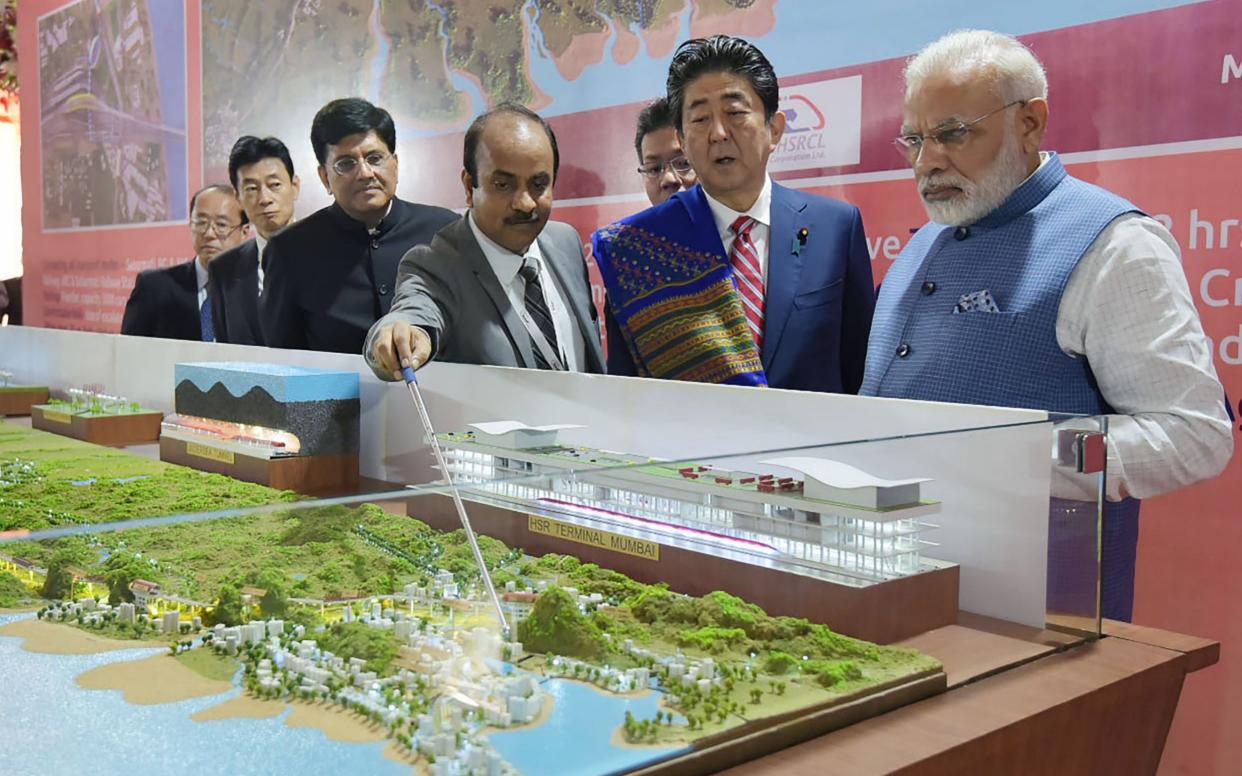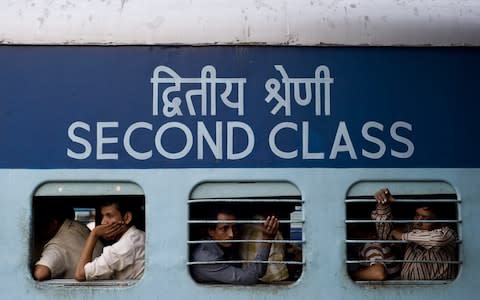Indian bullet train met with criticism as Modi celebrates with Japanese PM

Japan’s Prime Minister Shinzo Abe laid the foundation stone of a £14.4bn high-speed train project in his Indian counterpart Narendra Modi’s western home state of Gujarat on Thursday.
Funded largely by a loan from Japan, the bullet train is expected to reduce the time of the 310-mile long journey between Gujarat’s largest town of Ahmedabad and the port city of Mumbai to less than three hours, which currently takes eight.
The 750-seat train travels at a speed of 217mph, more than twice the maximum speed of any Indian Rail locomotive, is scheduled to run from mid-August 2022 to mark the country’s 75th Independence Day anniversary.
Indian Rail officials said the major portion of the train’s route would be elevated, except for a 4.3 mile stretch under the sea.

“This enterprise will launch a revolution in Indian railways and speed up India’s journey into the future” Mr Modi said, adding that it will be an engine of economic transformation for the country.
But political allies of Mr Modi’s Hindu nationalist Bharatiya Janata Party (BJP), opposition leaders, analysts and economists strongly disagree.
They question the necessity of the bullet train project at a time when money is desperately needed for other projects that have been starved of resources.
“We are getting a bullet train without asking for it and do not know exactly what problems this will solve,” said the Shiv Sena, the BJP’s ultra Right-Wing ally in the federal government, that politically controls Mumbai.
“Modi’s dream is not of the common man, but of the rich” the party declared, adding the bullet train is being introduced at the cost of the cash-strapped and broken down local rail network.
Founded by the Colonial administration in 1853, Indian Railway is the world’s third largest network and transports 23 million people every day.

Currently, however, it is broke due to decades-long recurring losses spawned by inefficiency and corruption.
Senior officials admit Indian Railway barely has enough money to pay for itself, let alone invest in modernisation and safety measures, resulting in frequent accidents.
The federal Railway Ministry recently told parliament that over 800 people had died in around 450 accidents between 2013 and 2017 due to poor maintenance, outdated rolling stock, corroded rail lines and bridges dating back to colonial times.
Roughly 15,000 people a year were run over by speeding trains while crossing rail tracks, and around 3,000 of them were hit on Mumbai’s busy suburban network, which transports over seven million commuters.
“The big question that will not go away, is whether the same investment on upgrading the entire Indian Railway network would be more economically beneficial, than a single, high cost bullet train project," said economic and political analyst Mohan Guruswamy.

